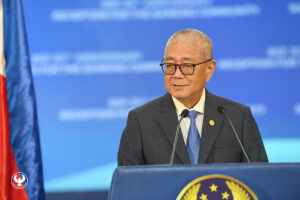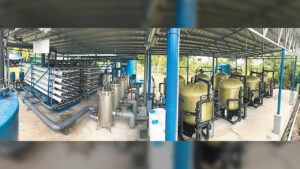THE PHILIPPINE automotive market seems to be defying gravity. Overall, the ASEAN market is estimated to have declined by around 8% from January to June this year, compared to the same period last year. Indonesia — the biggest market in the region — is down by over 10%, while Thailand — formerly the largest auto market — has dropped by over 20%. Even Vietnam, which has been among the fastest-growing in recent years, is reporting slowdown of almost 10%. Malaysia registered a rise in sales, albeit by a more modest 5%.
In comparison, the Philippine market is up by 10% year on year, as of June 2024. There is a myriad of reasons for this growth: One is the still-robust economic expansion being experienced by the country; another is the rise of motorization. GDP growth of 6.3% in Q2 is the strongest it has been over the last five quarters. Unlike our neighbors, we have a consumption-driven economy — up to 70% of GDP. On the contrary, Thailand is dependent on exports — particularly to China, which itself is experiencing an economic slowdown. Indonesia depends on mineral resource exports that have been reined in by the government and have been, at the same time, affected by a slowdown in global demand.
The return of consumer financing by banks and financing companies has also been another macro factor in the surge of sales here. In contrast, the tightening of credit is seen as a deflating factor in Thailand where household debt of ฿16.3 trillion is equivalent to 91% of GDP. In the Philippines, the household debt-to-GDP ratio is only 12.6%. As such, credit access and availability is still expanding — thus driving car sales.
On the micro level, the entry of new car makers to the domestic auto market has also contributed to robust sales. As a Business Economics graduate, I learned the theory that “supply creates its own demand.” New model introductions and normalized supply chains by almost all brands — especially the Chinese — are also stimulating demand among car buyers. The expansion in model offerings in the market is proving to be very enticing, and a compelling reason to purchase, for many. In 2023, Chinese brands that are members of the Chamber of Automotive Manufacturers of the Philippines, Inc. (CAMPI) reported sales of 22,140 units, accounting for 5% of the market. As of June 2024, their sales have reached 12,675 units, 5.6% of total sales and a growth of 14% year on year.
Drilling down even further, new market segments are opening up and driving emerging demand. For example, the jeepney modernization program of the government is creating a whole new category of public utility vehicles. There are reportedly around 250,000 jeepney units registered in the country, and this is fueling a new supply channel.
And then, of course, there is the nascent sector of electrified vehicles. While much has been said about the “inevitability” of electrified mobility, the path it has taken so far is still in flux, especially in the Philippines and other developing countries. Many of the automakers from China used their new energy vehicles (NEVs) to herald their entry into the local market. BYD is the latest to land on Philippine shores.
The thrust of the government to seed and grow electrified vehicles — hybrid electric vehicles (HEVs), plug-in hybrid electric vehicles (PHEVs), battery electric vehicles (BEVs) — is evident. In fact, it passed the Electric Vehicle Industry Development Act (EVIDA) that gave rise to the Comprehensive Roadmap for the Electric Vehicle Industry (CREVI). This legislation is aimed at stimulating investments, development, and usage of electric vehicles through various programs such as import tariff exemptions, exclusion from the Unified Vehicular Volume Reduction Program (UVVRP), and incentives for the development of charging networks.
Surely, the introduction and supply of electrified vehicles is — and will — stimulate a whole new demand stream that may further drive growth in the country’s auto market. Of course, a part of that will substitute demand for internal combustion engines (ICE). But the early adopters — due to the still relatively high price of EVs — will likely boost additional demand based on climate advocacy and the perceived advantages of EV use.
In 2023, CAMPI reported combined sales of 11,584 units for both HEV and BEV models, representing 2.6% of the total market. HEVs accounted for 95% of total EV sales, while BEVs comprised 5%. As of June 2024, total reported EV sales reached 9,238 units or almost 80% of the full-year figure for 2023. The split between HEV and BEV remains the same, but the EV segment now accounts for 4.1% of the whole market. Clearly, this is a fast-emerging segment. With the recent announcement that HEVs are now exempt from import tariffs (up to 2028), demand is expected to climb even more. Also, the first-half numbers do not include sales of BYD yet.
Toyota leads the electrified segment, accounting for almost 70% of total sales — 72.6% of the HEV category and 4.7% of the BEV class. Nissan is second with an 8.9% share, while Geely is third with a 5.8% share.
Toyota has been a staunch advocate of electrified mobility and the battle for carbon neutrality (CN), beginning its journey back in 1997 with the introduction of the Prius. It has since sold over 22.5 million electrified vehicles resulting in emissions reductions equivalent to what 7.5 million BEVs could have achieved. However, it has been pointed out that Toyota is seemingly slow to the draw with regard to the transition to BEVs.
Toyota believes that its development of EVs should be in pace with the appetite of car buyers to make the switch. There are three legs for electrification to succeed — the government, the car maker, and the customer. The government is responsible for creating the fiscal framework to promote sustainable mobility; the car maker is responsible for developing the vehicles and products. The customer, however, ultimately decides based on affordability, operability, and convenience.
Arguably, therefore, it is the customer who dictates the rate of adoption and, accordingly, the pace of EV development by car makers. So far, it seems that affordability and operability remain key barriers to a more rapid pace of EV adoption — particularly for BEVs. Range anxiety is a clear and present concern due to a still-limited battery-charging network. HEVs are better received since they are self-charging; they do not depend on charging stations and inordinate running downtimes. Prices of EVs are coming down — both for HEVs and BEVs — but are still at a premium over their ICE-powered counterparts.
In the journey to sustainable mobility, it is important to keep the whys of things in mind. The thrust to electrified motoring is not, arguably, because EVs are more fun to drive. They are not more affordable or cheaper in cost to produce; they do not create more jobs because, in fact, they have a significantly lesser number of components.
The ultimate goal of electrification is to battle greenhouse gases and achieve CN. As such, Toyota advocates for a multi-pathway to achieving this objective. After all, the war against carbon emissions should be technology-agnostic — focusing, instead, on embracing any technology that helps move the needle towards its goal, in line with the level of preparedness that countries can provide and that customers are willing to accept.
These include building a battery-charging network as well as transitioning to renewable energy so the battle for CN is won not only in the wheel well and tailpipe but also the oil well and power-generation plants. At this point, perhaps, HEVs are the most practicable and impactful option for the Philippines to pursue its sustainability goals. They are readily deployed, and they help in the fight for CN today.
There is no need to kick the can down the road any further.
Sustainable mobility does not have to be a one-size-fits-all journey. We do whatever it takes, and we should make sure no one is left behind. We are all in this together.
The author is the chairman of GT Capital Auto and Mobility Holdings, Inc., aside from his posts as Toyota Motor Philippines Corp. director and Lexus Manila chairman.


















